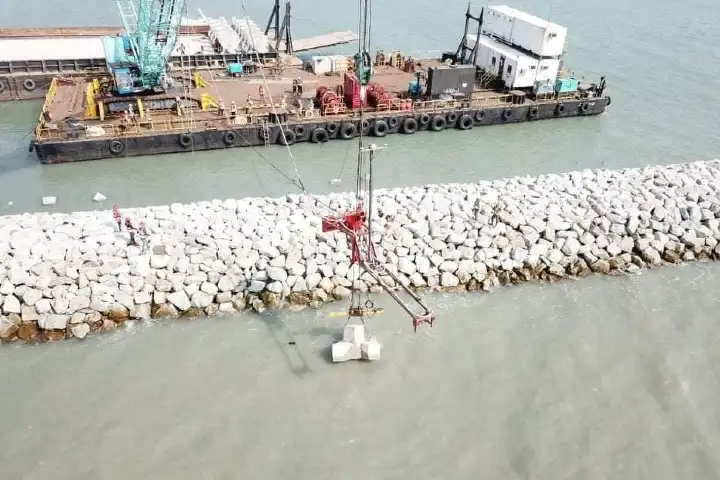The Matarbari deep sea port, which is currently under construction in Bangladesh, will be a game changer for the region as it would open up connectivity with India’s northeast, especially Tripura, along with landlocked Nepal and Bhutan. For Japan, India’s northeast has been in focus for some time. Japan has shown an urgency build an integrated and scaled up supply chain in the region as it plans to boost its presence and increase investments.
At present, only about 350 Japanese companies operate in Bangladesh but once the region is integrated, trade and economy can zoom.
The port located at Cox’s Bazar, is primarily being developed by Japan International Cooperation Agency under the Bay of Bengal Industrial Growth Hubs.
“Japan wants better connectivity between India’s northeast and Bangladesh to leverage and build on each other’s strengths,” Takashi Suzuki, Chief Director General (South Asia), Japan External Trade Organisation (JETRO) told India Narrative earlier.
During his trip to India, Japanese Prime Minister Fumio Kishida too highlighted the importance of strengthening connectivity in the Northeast region, rich in resources but is relatively untapped, for developing robust global supply chains.
National Maritime Foundation (NMF) in a study noted that connectivity will open avenues for collaborative endeavours among nations while encouraging partnerships across multiple sectors including infrastructure, tourism, cultural integration, and of course, logistics, and trade. “The establishment of a seamless regional trade network lays the foundation for shared prosperity and sustainable development, ultimately benefiting all participating nations,” it said.
Once the deep sea port becomes operational, a large number of items that are currently being traded through Haldia port could be routed through Matarbari, thus easing the load on one port. Importantly, Matarbari will be able to handle larger cargos as well.
The project also allows India to balance China which is aggressively enhancing its influence through the multi trillion Belt and Road Initiative. “Matarbari port is strategic. It will boost connectivity but notably it gives both India and Japan a big opportunity to balance China’s growing influence,” an analyst said.
According to Maritime Gateway, Japan’s engagement in Bangladesh for connectivity development goes hand-in-hand with India’s endeavour which is undertaking upgradation of Mongla Port, road and power transmission networks, railway lines, inland waterways, among others, in the neighbouring country.
Last year, trans-shipment of cargo movements began between Kolkata to the northeast through Bangladesh’s Mongla port marking a new era in connectivity for New Delhi and Dhaka.
Benefits to Nepal and Bhutan
Nepal and Bhutan, the two landlocked countries in the region, are dependent on India and Bangladesh for port access. Therefore, the Matarbari port will not only bring significant economic advantages to Bangladesh “but also holds significant potential for neighbouring landlocked countries such as Nepal and Bhutan,” NMF said.
These countries would experience substantial benefits through the reduction of regional transshipment costs for their goods and Bangladesh hopes to be able to do just that, it said.
South Asian countries are among the least connected and integrated in the world today.
“The eastern sub-region is poised to become an economic growth pole for South Asia. An important component of this development potential is for countries to invest in connectivity – rail, inland waterways, and roads,” Junaid Ahmad, Vice President of Operations, Multilateral Investment Guarantee Agency of the World Bank who earlier served as country director for India had noted.
Also read: India steps up rail connectivity with Myanmar in outreach to ASEAN




















